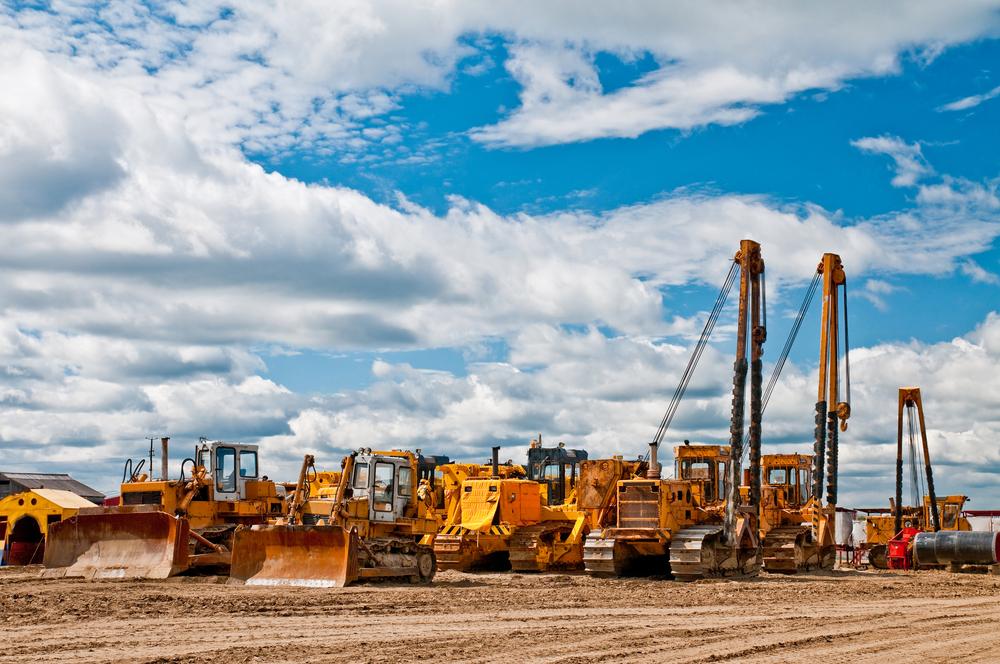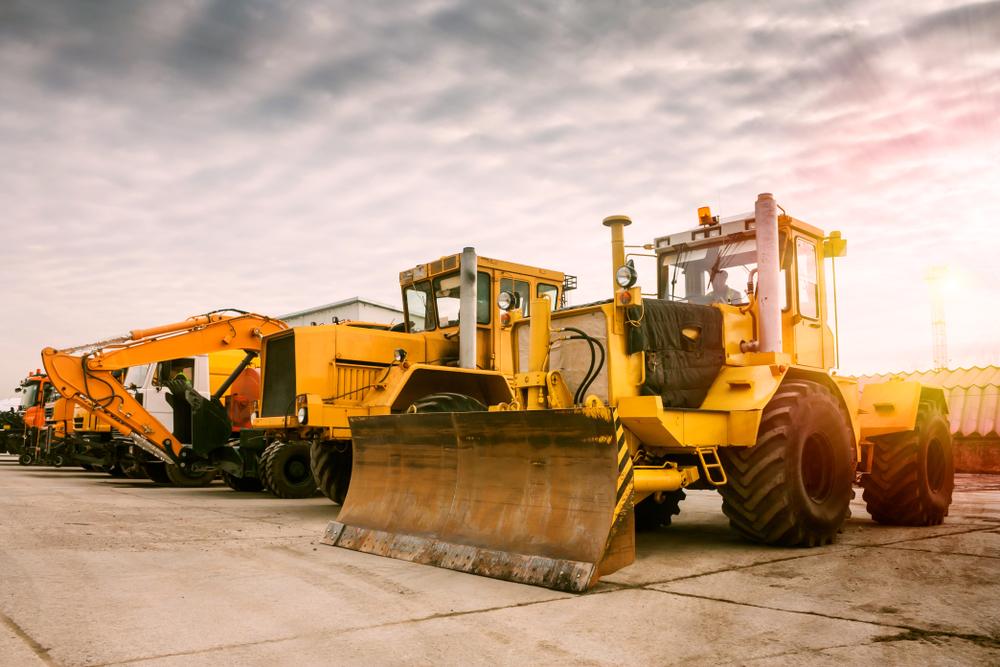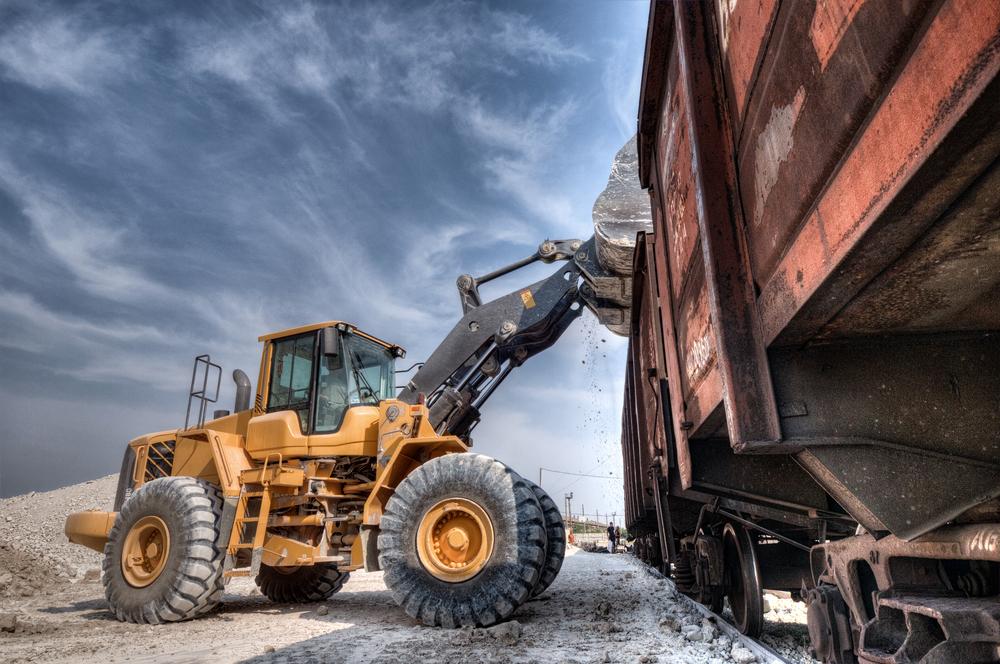
Nowadays, many companies specialize in hauling all kinds of cargo, from small, packaged products that come in bulk and are moved in shipping containers to big, heavy machines that can only be hauled by huge ships and need specialized crews to handle them.
Logistics can be one of the most essential parts of this process, especially if you think about international shipping. How does a machine go from point A to point B in the correct amount of time, delivered safely and in good condition? And if you think about heavy equipment, what are the challenges of this kind of transport?

What is Heavy Equipment Shipping?
It's hard to determine what falls under heavy equipment, as it is a broad term. It usually consists of large machinery or tools with a minimum weight of 10,000 pounds or more. Because of its size and weight, this equipment must be loaded and unloaded by cranes if it can't be driven in and out of the transport mode.
When hauled, these heavy machines usually require permits, escorts, route surveys, and experienced carriers with specialized trailers to haul this equipment safely. These machines are considered heavy. Still, we can separate them into a few categories:
- Construction Equipment: Includes excavators, bulldozers, loaders, cranes, and concrete mixers.
- Mining Equipment: Involves large machinery used in mining operations, such as drills, draglines, and haul trucks.
- Agricultural Equipment: Includes tractors, combines, harvesters, and other farm machinery.
- Industrial Machinery: Encompasses various heavy machinery used in manufacturing processes in industrial plants.
- Specialized Equipment: This can include any oversized or overweight equipment that requires special handling and doesn't fall into the above categories, such as military supplies.
Regulations
When considering heavy equipment hauling, you need to understand that, in the United States, many rules and regulations come into play when moving any machinery or tools that may pose a challenge to logistics and safety.
The US Department of Transportation (DOT) and the Federal Motor Carrier Safety Administration (FMCSA) are the governing bodies responsible for providing these rules and regulations for transport. But it would be best if you also kept in mind that states also have their restrictions, so checking them out beforehand is critical. If you have trouble following and understanding all these regulations, contacting an expert in the field might be a good idea.
Weighty Supplies Carrier Methods
Hauling weighty tools can be done via different methods, mainly including container shipping, flat rack shipping, lift-on/lift-off shipping, and roll-on/roll-off shipping—the choice regarding which one you want to use might depend on a few factors.
First is how you want your equipment to arrive. If you don't mind the disassembling and assembling process, containers are your solution. But if your machine cannot be broken down into parts, you might need to consider other methods. Then you feel the size of the equipment or its parts because some may not even fit into a container, so you won't have any choice.
Let's take a closer look at those four methods:

Container Hauling
Container shipping is the standard in the hauling industry: it involves packaging cargo in large, standardized containers placed on flatbed trucks or cargo ships for transport across large distances. They usually measure from 20 ft to 53 ft long.
The advantage of container shipping lies primarily in its standardized quality, which means efficiency in carrier and logistics. Your equipment inside the container can be stacked alongside other cargo in the same ship, impacting shipping costs to drive them down.
You can use many different types of containers to haul serious tools, such as flat rack, open-end, half-height, open-top, and refrigerated containers.
Flat Rack Transportation
Flat rack transportation might be the solution if your machine or tools need to be loaded from the top or sides, primarily due to irregular shape and size. These flat rack containers only have bulkhead support, meaning your cargo can stick out from the sides during carrier.
They usually come in the standard 20-foot or 40-foot sizes, and many of these containers have forklift pockets for ease of lift and movement. They are manufactured using strengthened steel, so they stand rigid throughout transit.
Since they are open to the elements, it might be essential to use heavy-duty tarps to protect sensitive cargo while on the move, so this type of transportation is more advantageous if your tools can be exposed to the elements without worrying about damage.
Lift-on/Lift-off Method
Also called the LoLo delivery method means loading and unloading cargo over the top side of the shipping vessel using derricks or cranes. Most ships capable of hauling using this method already have onboard cranes for this shipping technique.
As a result, they can accommodate a much larger container capacity since they don't need as much legroom or space for vehicles like forklifts to move around when loading or unloading cargo.
Roll-On/Roll-Off Method
The last one on our list also has a nickname, the RoRo method. This means driving vehicles onto a shipping vessel and maneuvering containers instead of lifting them into their spots by crane.
This method can be used to ship cars, trucks, and tractors by utilizing their wheels and engines to get onto the vessel, and it means that it is employed for weighty supplies vehicles in general.

Preparation
If you carefully plan your shipping, this process will go smoothly and with no mishaps. One crucial factor to consider is the density of the tools, as it will determine what kind of shipping method you can use, so gathering information about the type and size of machinery is a must right from the start.
To help you along the way, you must contact a hauler with experience in heavy machinery transportation. They can advise and recommend preparing any special permits and licenses you might need. They can also connect you with reliable and experienced drivers who can safely deliver your equipment while keeping cost-efficiency in mind.
You will also need to obtain the appropriate insurance coverage to protect your weighty supplies during transport, as it is a requirement not only of the US government but also a guarantee that any unforeseen circumstance will be covered in the process.
Packing
The next step before shipping is to prepare your machine by packing it properly. You want to pay attention to this step as it is essential to protect your equipment and ensure it will be delivered in the best condition.
This step will change according to each kind of machine, so it might be a good idea to check the user manual or consult support for the appropriate and recommended measures. But some of the common ways to prepare your supplies include:
- Cleaning the machine of dirt, dust, or debris
- Draining fluids that may potentially leak in transport and damage your cargo
- Removing detachable parts, attachments, or accessories that may move during transit and be a safety hazard
- Securing moving parts that cannot be extracted and could shift during transport
- Covering the machinery with protective materials to avoid contact with the weather
- Making an inventory of the machine and labeling relevant details will ensure drivers take necessary precautions in the shipment.

Costs
Right from the get-go, we'd like to give you the exact numbers on what to expect regarding the price, but many factors are involved in making a quote, such as:
- Size of Your Heavy Equipment: The bigger, heavier, and more oddly shaped the piece of equipment, the more it may need specialized trailers, permits, or route planning, which will likely raise your shipping price.
- Time of Delivery: if you have requirements about your cargo being delivered at a specific time or faster than average, this can also impact the hauling price.
- Pick-up and Delivery Location: the distance your supplies need to travel is directly seen on the cost. Additionally, problems with your route, like going through big cities, might increase your delivery costs.
- Time of the Year: weather conditions like snow in the winter months or summer storms can affect your pricing if specific routes are shut off, making the journey longer. From April to October, flatbed peak shipping season will also increase flatbed demand and rates.
- Fuel Rates: seasonal changes in fuel costs will directly affect the final quote on your shipping.
- Permit or Licenses Required: hauling weighty tools usually requires permits. Costs vary by state, and some states may take longer to issue permits, so be aware of that during the planning stage.
- Escorting: Considering the height and width of your freight, if you need escort cars for your cargo, that must also go into your budget. Check your routing to see if escort cars are required.
Final Thoughts
When hauling a heavy machine, you must consider the above. But if you're still unsure how to proceed, contacting an experienced company in the market is your best bet.
A1 Auto Transport is the perfect choice. They have many services to offer you, and you can even get a free shipping quote if you want to make plans. They also present you with exceptional help if you need heavy equipment shipping.






 Share on Facebook
Share on Facebook Share on LinkedIn
Share on LinkedIn Share on Twitter
Share on Twitter




 Google
Google  Instagram
Instagram  Trustpilot
Trustpilot 



